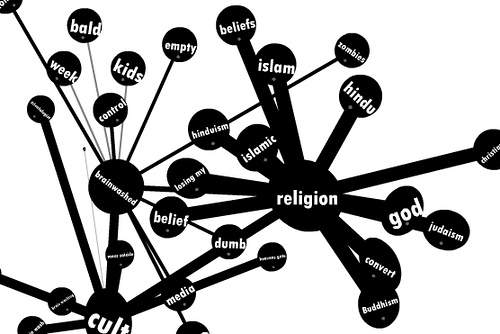In an recent blog I commented that:
…we continue to be committed to the idea of extending our current knowledge. For this to happen we should be willing to add but also to abandon ideas. This requires that some old ideas, no matter how venerable or favoured, get replaced. The criteria would be that the replacement-ideas are expected to do a better job of explaining what we call our “current raw data”, that is, materials previously gathered and collected during “research” episodes, but which have not yet been methodically and systematically processed and sorted.
There are several ideas here which merit further discussion.
 Foremost is the notion of a *research episode*, which I view as a prolonged and systematic inquiry into one or more well-articulated problems, and where each problem studied relates to some earlier research. There are many examples which could be cited, for instance the many cited in Hawkings A Brief History of Time (1988), but my own research was heavily influenced by two newcomers in the early 1950’s, by ethology (a form of studying animal behaviour: Niko Tinbergen, A Study of Instinct, 1950) and the study of operant behaviour as advocated by B.F. Skinner in his book The Behaviour of Organisms (1938).
Foremost is the notion of a *research episode*, which I view as a prolonged and systematic inquiry into one or more well-articulated problems, and where each problem studied relates to some earlier research. There are many examples which could be cited, for instance the many cited in Hawkings A Brief History of Time (1988), but my own research was heavily influenced by two newcomers in the early 1950’s, by ethology (a form of studying animal behaviour: Niko Tinbergen, A Study of Instinct, 1950) and the study of operant behaviour as advocated by B.F. Skinner in his book The Behaviour of Organisms (1938).
I often met Tinbergen on his regular visits to lunch with my friend and colleague B.M. Foss at Birkbeck College; I met Skinner in 1951 in Sweden at the International Congress of Psychology and thereafter every few years. We stayed in contact for the next 35 years. Both had founded new schools of research which reached far beyond Oxford and Harvard and each gave birth to distinct “schools” of thought which led to significant research efforts by others throughout the world and which expanded into fields of study other than the “Herring Gull” or the pigeon in its “Skinner box” pecking at discs. Both men deeply influenced the way we in the 20th century thought about our world.
I use the term *research episode* in a wide sense, as not confined to a short period of time, or as associated with a particular individual, but as a period within an existing science which may develop considerable momentum as new problems are explored by an increasing number of investigators (often on a cross disciplinary basis). The methods and ways of thinking about problems is influenced as new frontiers of inquiry are reached and breached. Such episodes may start as a distinct, even limited form of inquiry, and then may expand either slowly or rapidly to cover more and more “problem areas” as also inadvertently “invade” other territories.
The ethology of Tinbergen, or “instinct theory” as it was often referred to in its early days, had a profound impact on comparative neurophysiology — and continues to influence it. It extended and dated the earlier concepts of Pavlovian neurophysiology which had started almost three quarter of a century earlier. Pavlov’s thinking itself was influenced by the notion that the nervous system was a direct extension of the reflex-arc and was influenced by the idea that all neurological systems were built on a similar, closely related architecture. Differences were attributed to levels of complexity and eschewed the idea that levels of complexity could be the source of irreconcilable differences in nature itself.
What is research? The term *research* is well established. In English it comes from the verb “to search”, to look into and to look for. It covers trivial efforts — like the birth date of a favorite composer or author — to issues which require prolonged investigation, e.g. how honeybees return to their hives after foraging, or informing other bees on their return from a location of a flower patch recently visited. Doing research invariably involves that one identifies a specific problem or set of problems and follows each of these to the point when most central questions seem satisfactorily answered.
In practise the original issues which first aroused one’s interest become modified en passant, are reinterpreted and as a result of such reinterpretations the conceptual net often becomes larger. It seems that two separate tasks are involved in research: the first requires much skill in asking questions. This has to be learnt and is skill honed through experience. One has to learn how to ask the right questions, something which nay require a long apprenticeship. The second requires that one learn how to move from translating a question — however it was initially stated — into a method of discovery, a method of enquiry.
The first example refers to something done quickly, in a jiffy so to speak! Today all one needs is a computer with Internet access and the know-how about how to search for answers in Wikipedia or similar sites. Most kids in my neighbourhood know how to do this. Some are wizards at this even at a tender age! No need for them to know anything more than how to approach a computer and ask questions, or so it seems. No need to memorize answers when it is so easy to access the memory of a computer! The “search” episode can therefore be very short, whereas understanding answers discovered may take long! It is different with questions about how honeybees communicate the direction and distance from hive to food source and then return! Do bees learn by their mistakes — like we do — or is there little tolerance for those who pass on misinformation to their hive-mates? Furthermore many questions cannot be answered by referring to the work of one’s predecessors. One enters the forrest alone, without companions, and with luck or skill exits at the other side.
Every doctoral dissertation supposedly consists of a new contribution to knowledge. New? The true story is that one asks questions which invariably lean on the work of others. Of course, one may lean on a house of cards or neglect the work of unknown predecessors. One may avoid errors by acquiring extensive knowledge of the history of a problem, yet errors and ommissions are unavoidable, although one can learn to reduce these in time.
Yet asking questions such as those already mentioned take place in a context. Broadly speaking the context is the culture of the petitioner(s). Although each question follows a string of earlier questions, the sequence is not necessarily orderly. The logic also is not rigid but is often a heavy mixture of materials drawn from earlier periods which themselves are infused with analogical materials, like what if all animals are like the branches of a tree, a common trunk from ground to sky, which branch out in familiar fashion? There is also often some element of “serendipity” which helps to uncover clues en passant — often rather unexpectedly.
These clues can dramatically change the order of discoveries made. Wrong leads are familiar to most experienced researchers. However orderly sequences do occur, as during conversations between like-minded people, or when one person instructs another in a teacher-pupil relationship. One guides the other. Conversations between colleagues also keep a discussion on track and encourages each discussant to follow implications of their thoughts. Some discussions are guided by appointed chairpersons, other move along and therefore have less structure, but may nevertheless reach comparable conclusions.
Conference organizers often try to follow this model. Left on their own most people — even disciplined, somewhat compulsive and single minded professors — “skip” from topic to topic without raising questions in a coherent manner, as if questions can be peeled layer by layer like the wrappings of a Christmas present, no matter where you start! The more wrappings the greater the excitement! Ultimately the core is exposed.
*Culture* is a flexible concept. Applied to a modern community it covers the idea of a mix of micro and macro cultures. But there is a significant difference between a group — viewed as an aggregate of individuals — and a culture. A culture involves a group of individuals, marks them as belonging together by virtue of common interests, not common physical markings. What is it that individuals prefer, what draws them to each other, what holds them together over time despite diversity of experience, physical dissimilarities? Those who are devoted piano players of Mozart or attend exhibitions of Picasso are already on board — as it were — and have cultural affinities. Whatever binds their interests and commitments may be limited, but forms a common ground.
In time, three men in a boat will form a community, functional or dysfunctional. In short, although there may be significant differences in the affiliations of individuals who form a group — the Thursday evening concert goers, say — these serve as the bricks from which a modest dwelling can be built. Thus individuals are viewed also as a member of a smaller community whereas none are likely to be members of all groups which make up the society as a whole.
What about “new arrivals” i.e. immigrants? These go through an acculturation period and process which can vary from one generation to another. At first each is reared as members of several small social groups, but this changes so that mature adults often become members of several quite distinct groups with interests and interactions shared some, but not all, of their time.
Take a standard example of how we may come to get involved in a problem and in attempts to find its solution. The problem may be complex, may not have a single solution but be a multiple problem with solutions for one but not for all aspects of the original problem. “Why did the hen cross the road?” This event happens all the time in country lanes, but never — as far as I know — on Bloor Street in Toronto, or Hyde Park Corner in London. What catches our attention and arouses our curiosity most often are what to us are unusual happenings: hens crossing city roads being one.
Take another example: I visit a learned friend’s home for the first time and note that his opulent library is arranged with books placed on the shelves in order of size, not colour, not content, not alphabetically or thematically. My initial shock turns into curiosity. Why do it that way? I sense a problem and I rummage for ideas I have had about organizing my own library, about what we know about the psychology of collectors, about library science. I do so for two related reasons: I wish to explain to myself what I have seen and perhaps share my explanation with friends and colleagues! There is a leap from individual perplexity — based on personal ideas about what is normal and what people do routinely — to an awareness of a general problem, that my problems are prototypical of those of others.
This general problem can be expressed in the following manner: what leads people to organize their phenomenological experiences into categories, and what consequences follow from adopting a “grouping routine” developed by an individual and by a group of cohorts?
In both examples the initial question represents the first step to what could turn out to be a long series of successive steps. Each answer is likely to lead to additional questions, then to more enquiries. Had I asked a pedestrian question, like who designed and built the St Paul’s cathedral in London, an answer would be available readily, by consulting an on-line (internet) encyclopedia. To help distinguish between these two types of inquiries it is fitting that we give each an appropriate name. I suggest that the term “research episode” be used for those many cases where the answer to a question (a) is not already readily available; or (b) where the search for an answer to a question requires that one pursues several different alternative hypotheses, which developed during the search. Some of these hypotheses will be rejected but others may serve as stepping stones, or toeholds, to additional answers and wider, perhaps newer areas of research.
I believe that formal concept of a “research episode” is new. It is categorical — not canonical — the sense that the concept helps us to organize what is already known independently, prior to the application of the category to the material. These categorical concepts may in time be elevated and become canonical, that is, become part of an established religion! An example may help: suppose you are given a 5000-piece jigsaw puzzle and several possible blueprints? One way of tackling this frustrating task is to conjecture an idea of what it is — a painting by Picasso or Turner perhaps — or work on an entirely different presupposition, namely that the puzzle will form a square or oblong picture, or perhaps a round or oval one. On what basis are thee suppositions made? What clues were used, if any? If one were told in advance the identity of the painter, or perhaps the topic of the painting, the task would be easier. (Note: we rarely enter such tasks naked; we usually get a chance to prepare ourselves — and this illustrates the importance of approaching any task with some preparation and about what is likely to happen once we start our journey of exploration.)
Suppose you find only 100 pieces of a puzzle. If told that the completed puzzle is a rectangular picture you that you need only 4 right angles pieces to form the corners. So the chances of an error in detecting a corner pieces are now 1:25, better by far than 1:5000 ! “Detect corner pieces” and “detect those right-angled pieces which define a corner” are procedural imperatives which are categorical, and may lead to the solution of the task. But if the picture is oval? Heaven help you — you will have to start by gathering together pieces by colour matching.

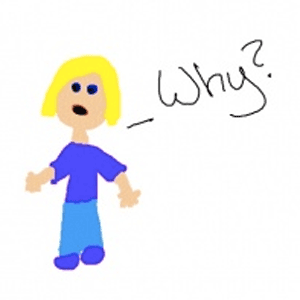 I shall therefore compose several pieces in the ELI5 mode. Hopefully adult readers won’t walk away. Please score me 1-10 — the higher the score, the less I have succeeded in stating my case. Give me a 1 if I have succeeded beyond my wildest dreams, and 10 if I have failed miserably, or anything in between.
I shall therefore compose several pieces in the ELI5 mode. Hopefully adult readers won’t walk away. Please score me 1-10 — the higher the score, the less I have succeeded in stating my case. Give me a 1 if I have succeeded beyond my wildest dreams, and 10 if I have failed miserably, or anything in between. The implication: science is more like a soft-cover book. A better analogy would be that science has the features of a loose-leaf file which is appropriately date stamped on every page. Its pages can be removed — but not trivially discarded. Continuity is an important factor in understanding!
The implication: science is more like a soft-cover book. A better analogy would be that science has the features of a loose-leaf file which is appropriately date stamped on every page. Its pages can be removed — but not trivially discarded. Continuity is an important factor in understanding!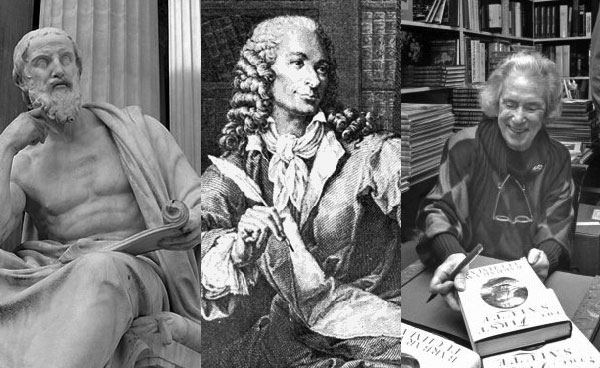
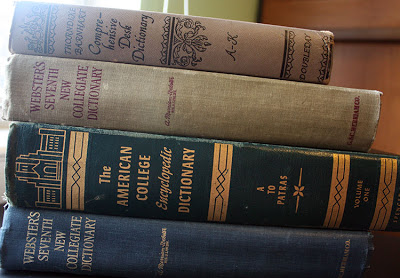 If W is a word, the rule appears to be that W may have at least two manifestations: (1) it is sounded in a certain way and (2) it is used in different ways on different occasions. If a word has multiple uses it follows that is has several definitions and some — if not all — should be registered in a common dictionary. A dictionary however is not expected by its users to exhaust how a word is used, or has been used — or how it will be used in. Dictionaries are very modish.
If W is a word, the rule appears to be that W may have at least two manifestations: (1) it is sounded in a certain way and (2) it is used in different ways on different occasions. If a word has multiple uses it follows that is has several definitions and some — if not all — should be registered in a common dictionary. A dictionary however is not expected by its users to exhaust how a word is used, or has been used — or how it will be used in. Dictionaries are very modish. The difference between (2) and (3) is straightforward: take for example the word *animal*. If one is discussing animals in a zoo — a specific context — most creatures not on display in cages or enclosures are excluded. Here the term *animal* has a restricted meaning so that insects, vermin, fish would be excluded. If one refers to snakes in an aquarium it is safe to assume — but not certain — that talk is about water-snakes. A general context (3) refers to no specific habitat but a context is assumed, so that one could be talking about land or water snakes.
The difference between (2) and (3) is straightforward: take for example the word *animal*. If one is discussing animals in a zoo — a specific context — most creatures not on display in cages or enclosures are excluded. Here the term *animal* has a restricted meaning so that insects, vermin, fish would be excluded. If one refers to snakes in an aquarium it is safe to assume — but not certain — that talk is about water-snakes. A general context (3) refers to no specific habitat but a context is assumed, so that one could be talking about land or water snakes.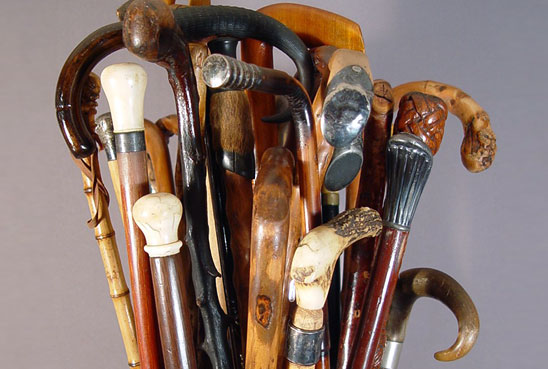 We make assumptions about many matters daily, but because these vary in credibility only some appear to need justification. Some assumptions appear bizarre and beyond justification. Others appear worth making but rather by others than oneself. So there is a wide spectrum — why, then, debate the issue at all?
We make assumptions about many matters daily, but because these vary in credibility only some appear to need justification. Some assumptions appear bizarre and beyond justification. Others appear worth making but rather by others than oneself. So there is a wide spectrum — why, then, debate the issue at all?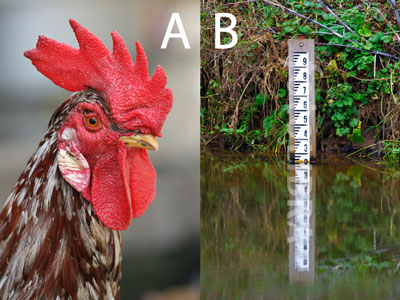 Both statements describe the condition of a river. The two statements appear to say the same thing, and therefore — it is claimed — have the same meaning. Even if it is not true that these are equivalent — in statement A, the river may yet run higher, contrary to what is said in statement B — it may be claimed that A is equivalent to B, and vice versa. It is a question of meaning.
Both statements describe the condition of a river. The two statements appear to say the same thing, and therefore — it is claimed — have the same meaning. Even if it is not true that these are equivalent — in statement A, the river may yet run higher, contrary to what is said in statement B — it may be claimed that A is equivalent to B, and vice versa. It is a question of meaning.  Both Alice and Humpty Dumpty have a strong case. Alice is justified in her complaint that words can and indeed often do mean many different things and that this can be most confusing — and can be injurious. More confusing to some than others. There are those who simply cannot cope with confusion. Psychologists have referred to this as the fear of ambiguity. Like other fears it terrifies and often paralyzes people.
Both Alice and Humpty Dumpty have a strong case. Alice is justified in her complaint that words can and indeed often do mean many different things and that this can be most confusing — and can be injurious. More confusing to some than others. There are those who simply cannot cope with confusion. Psychologists have referred to this as the fear of ambiguity. Like other fears it terrifies and often paralyzes people.